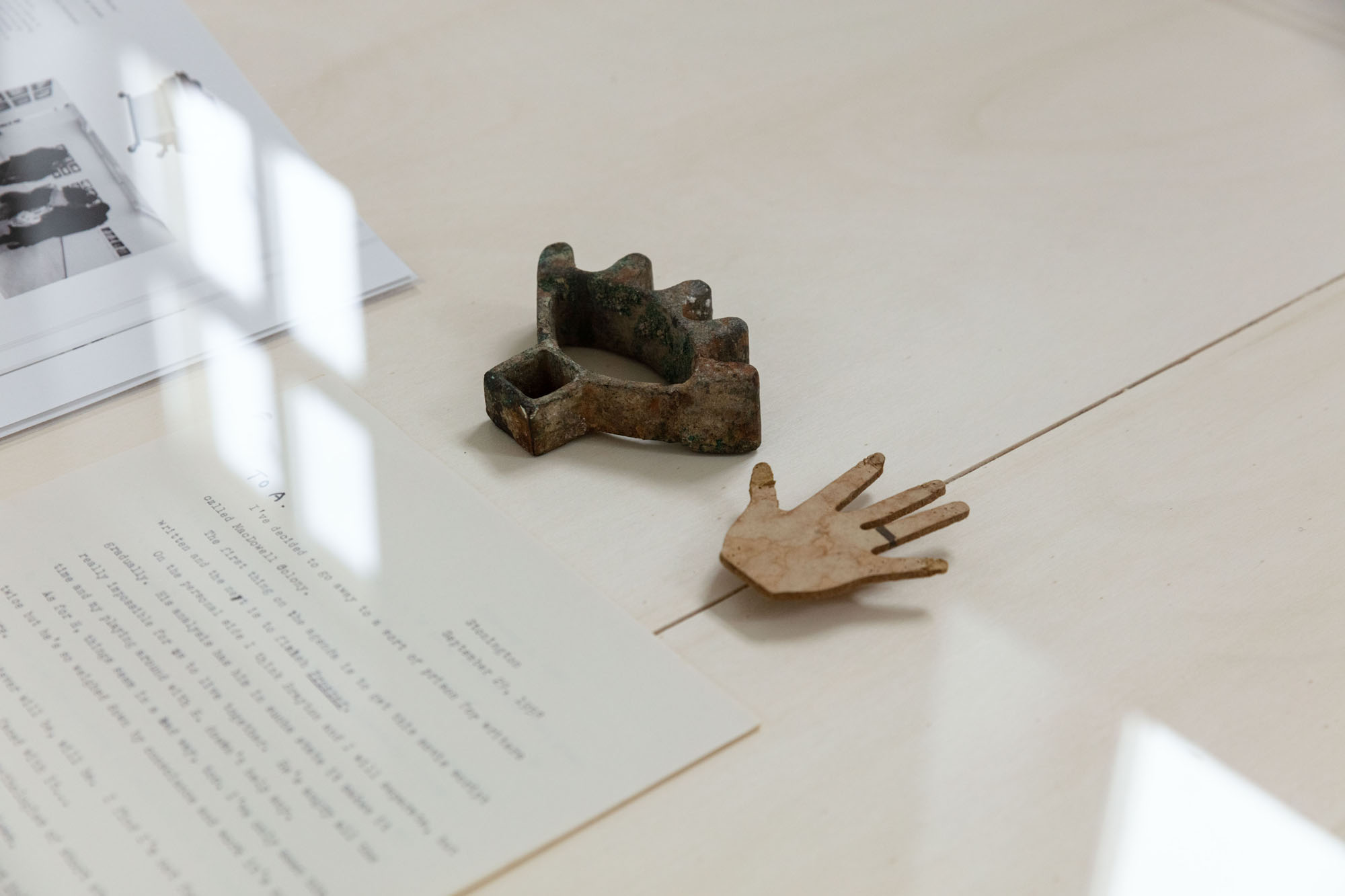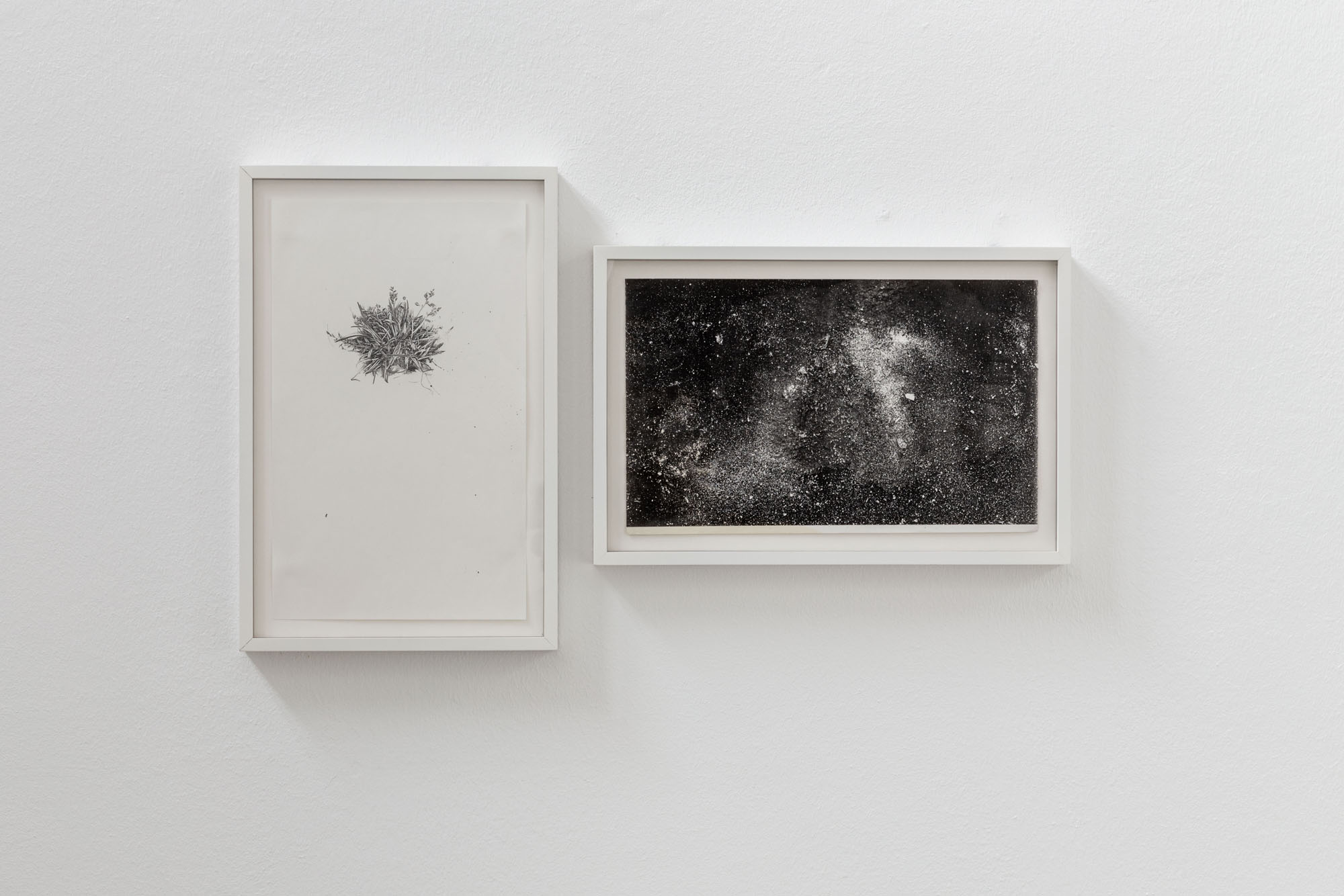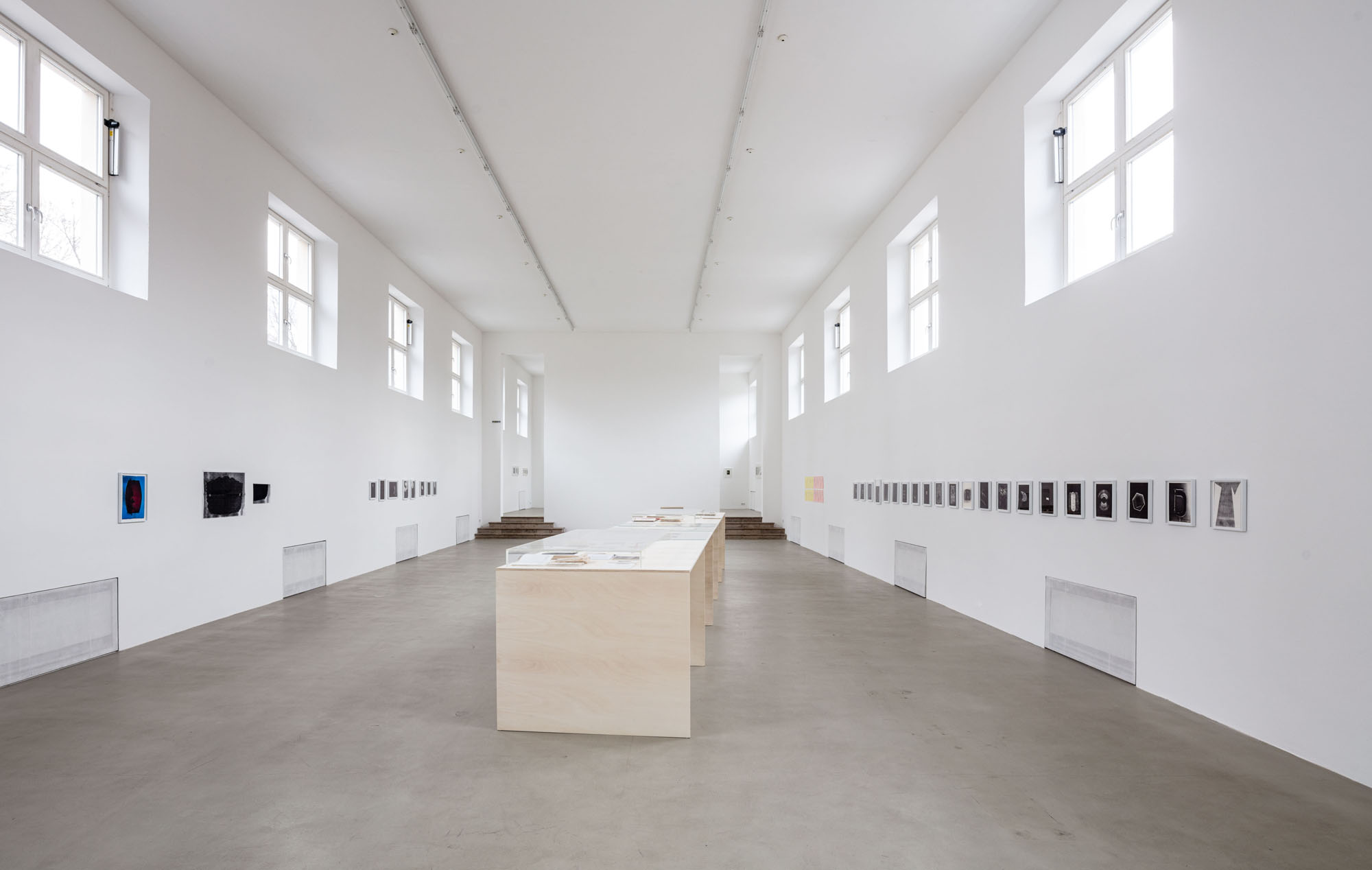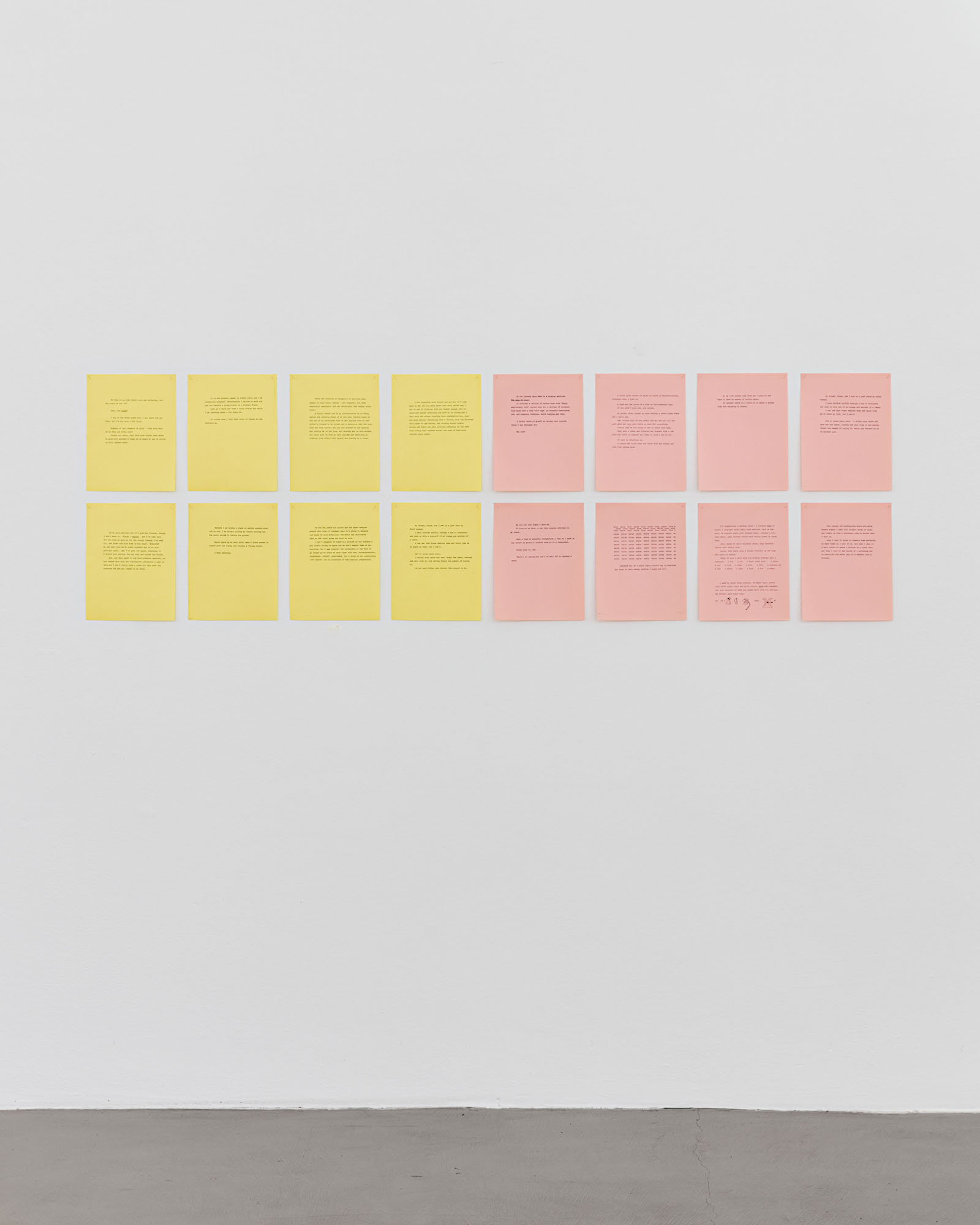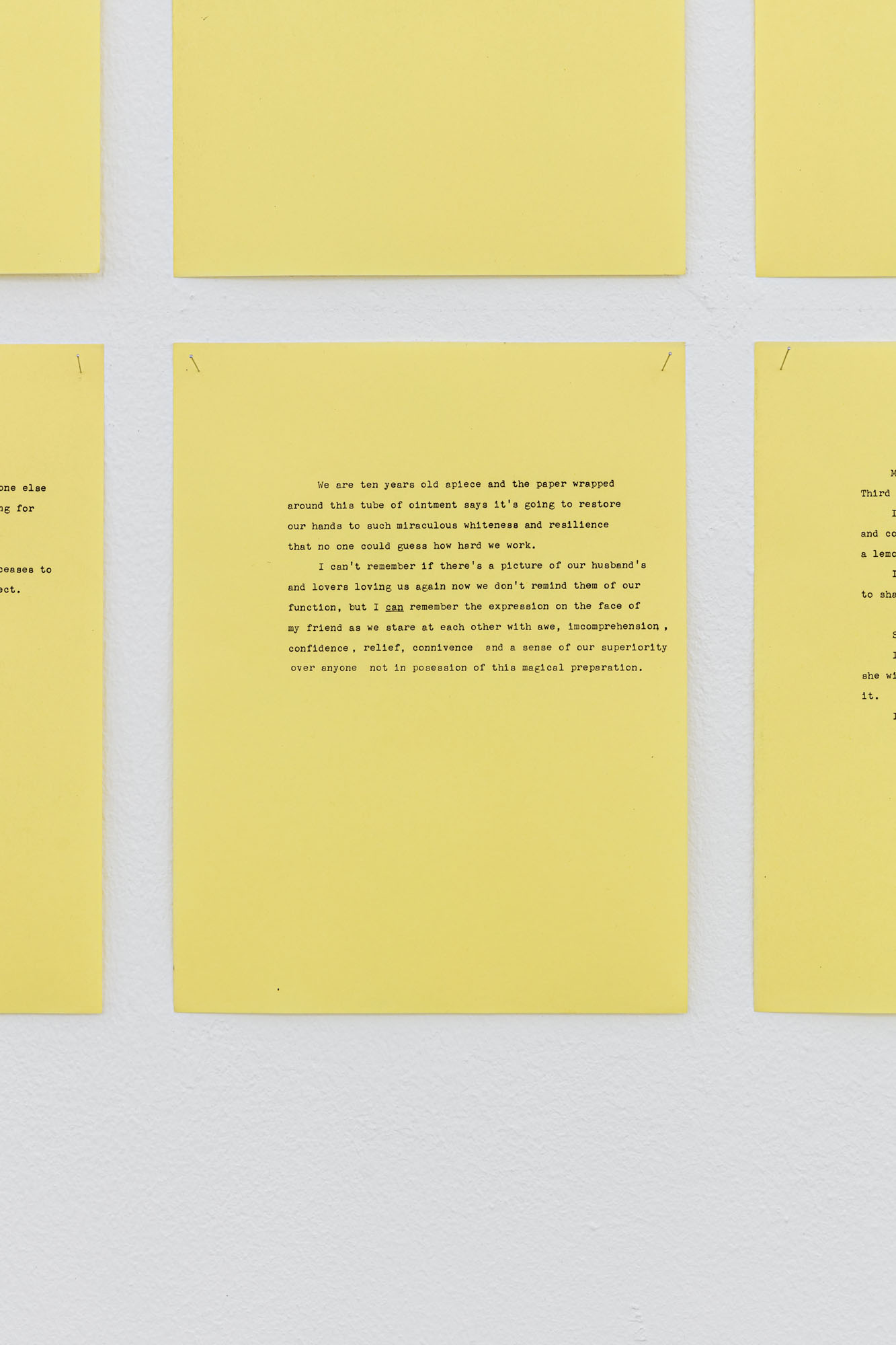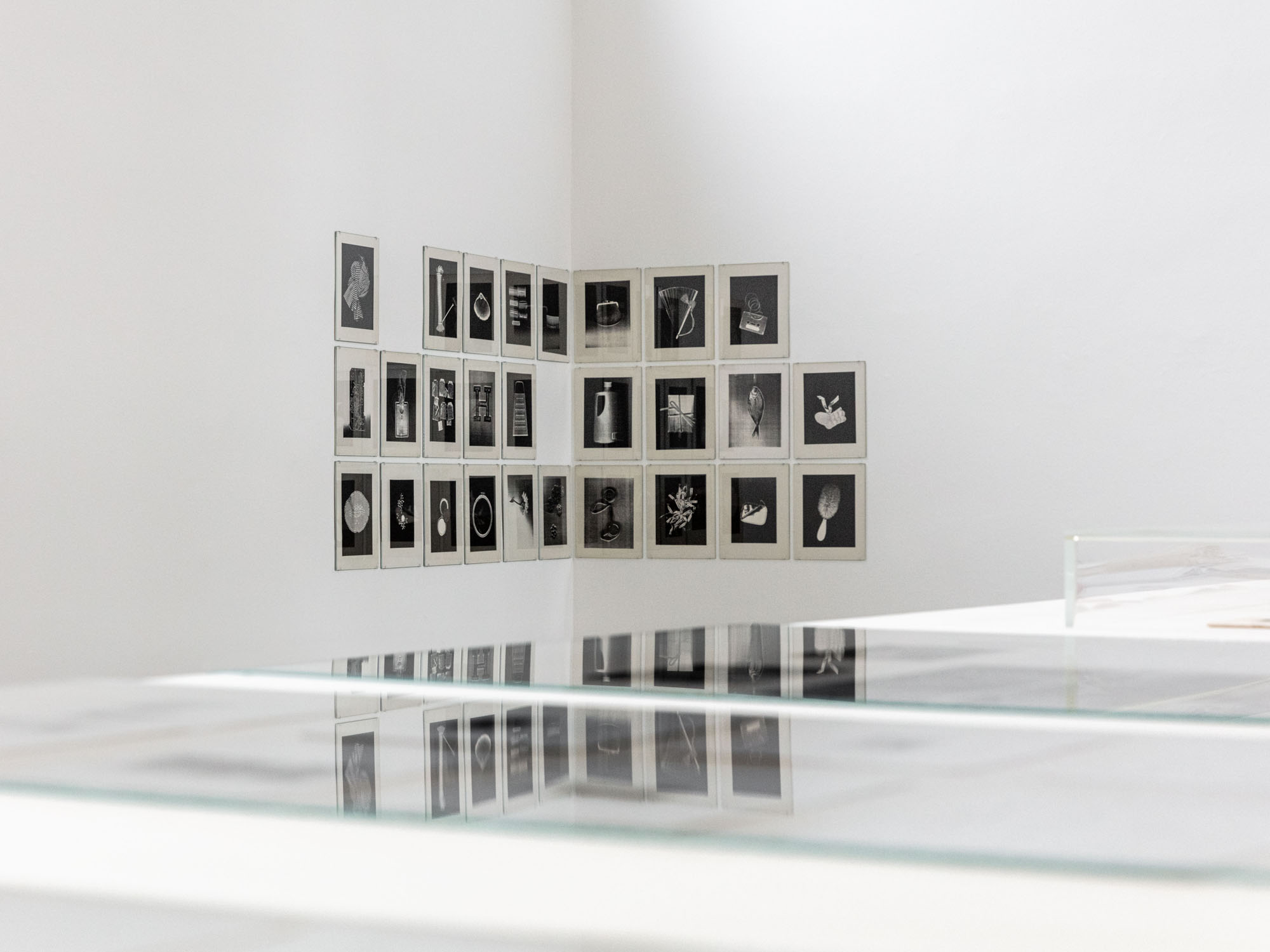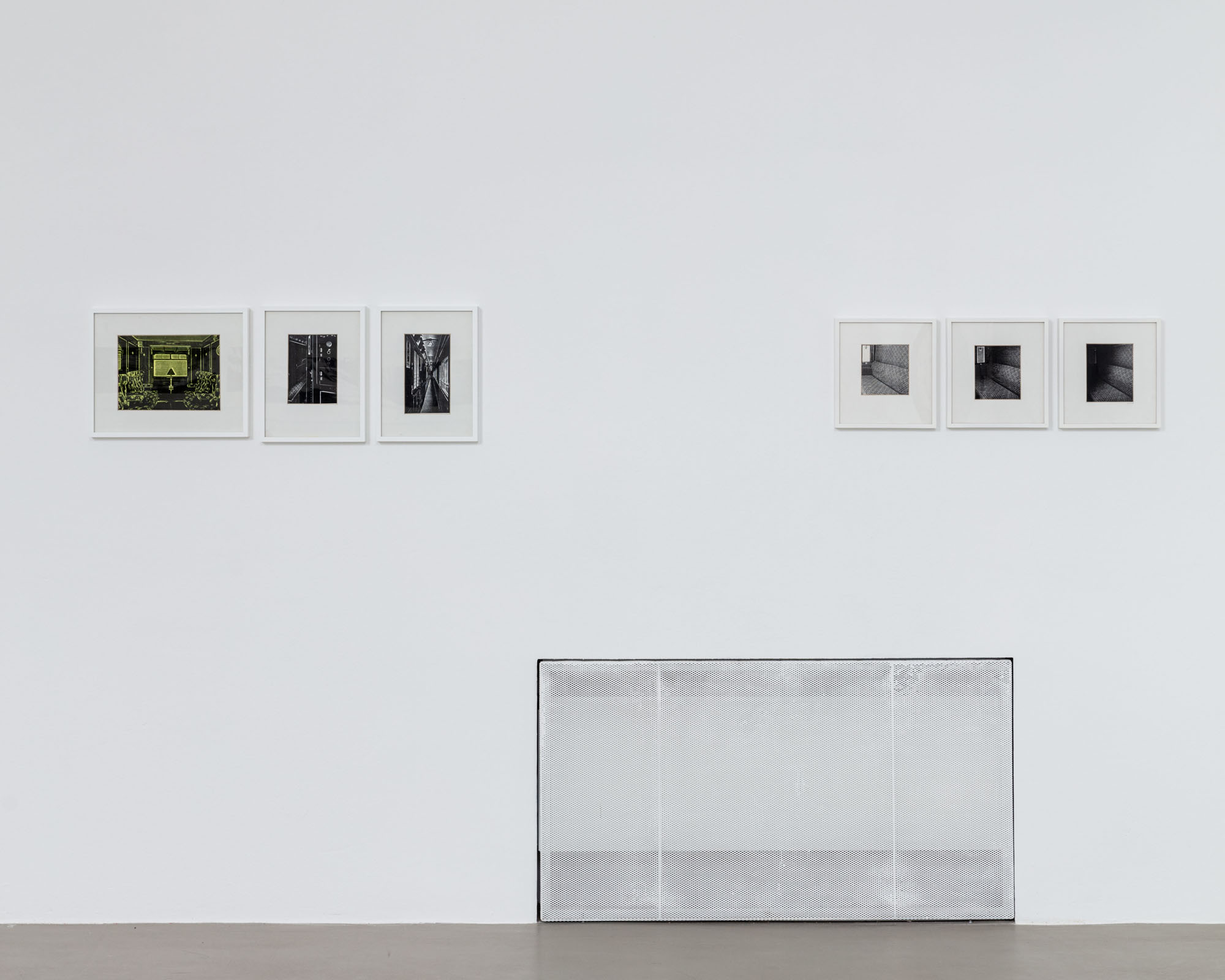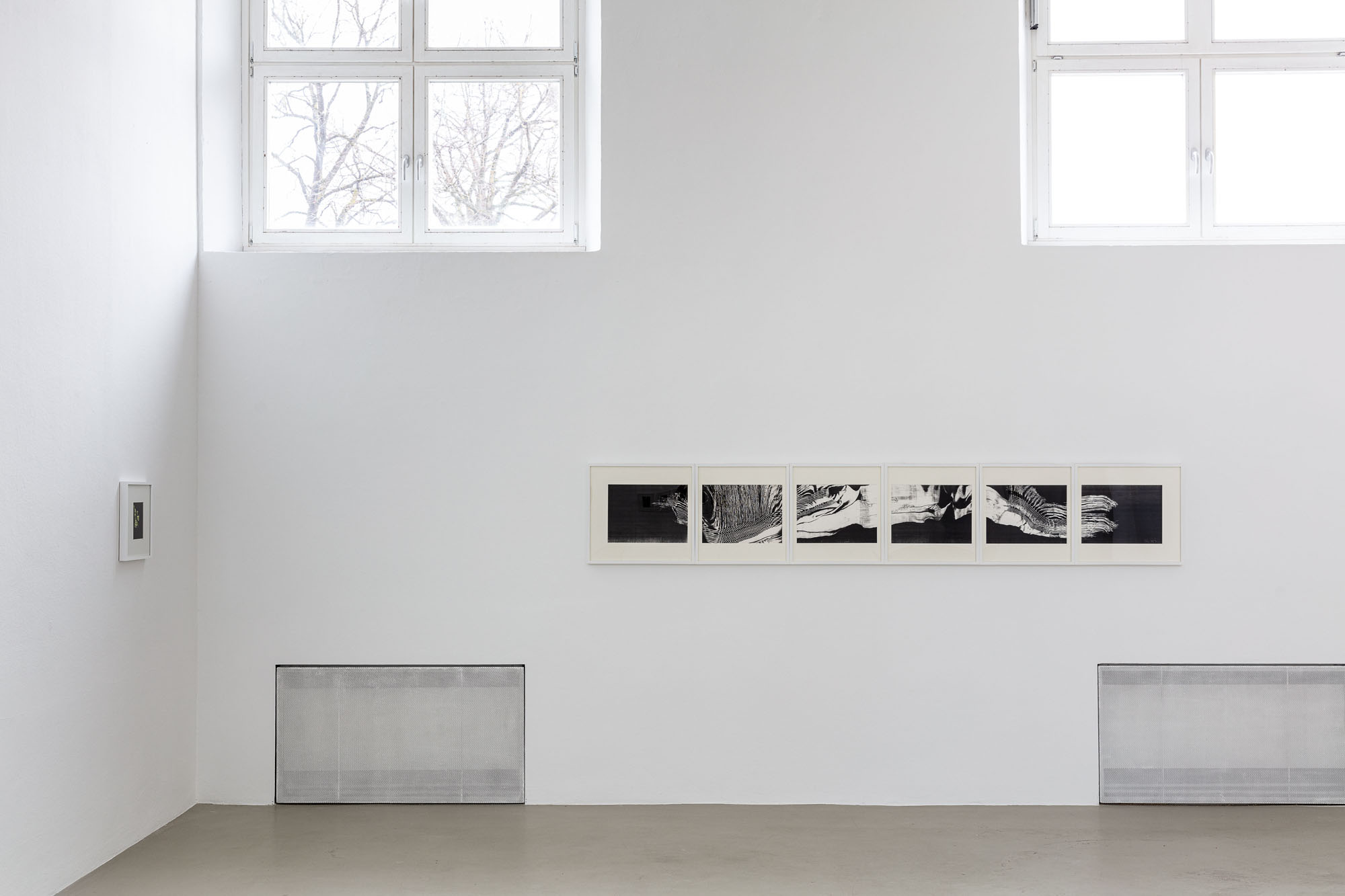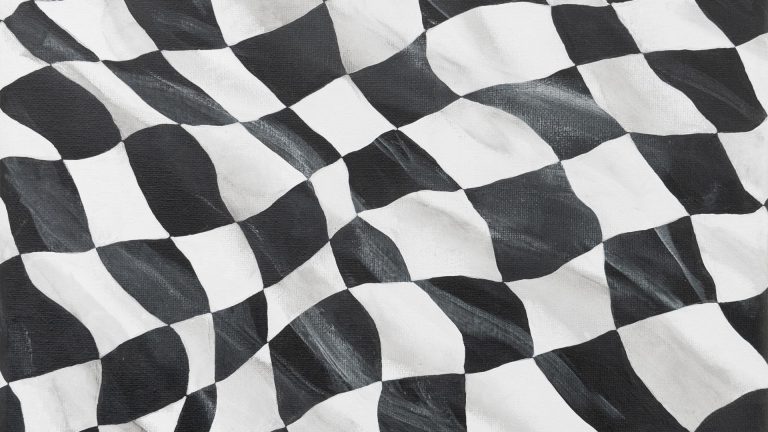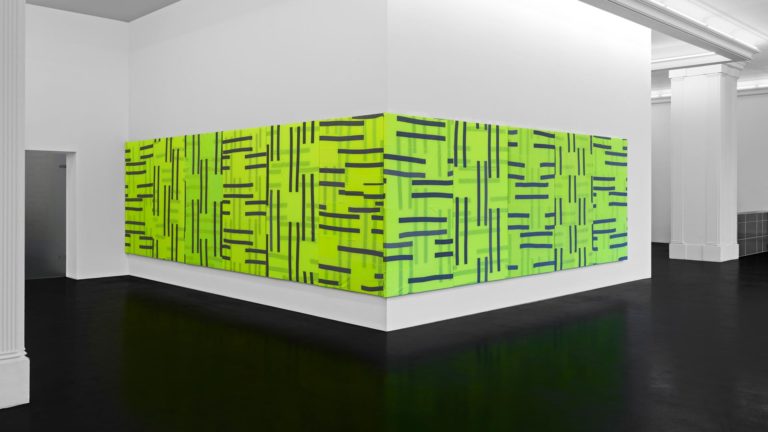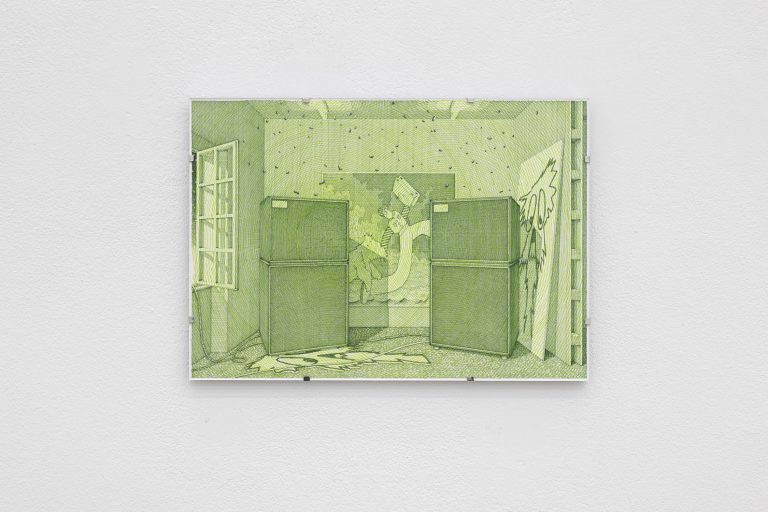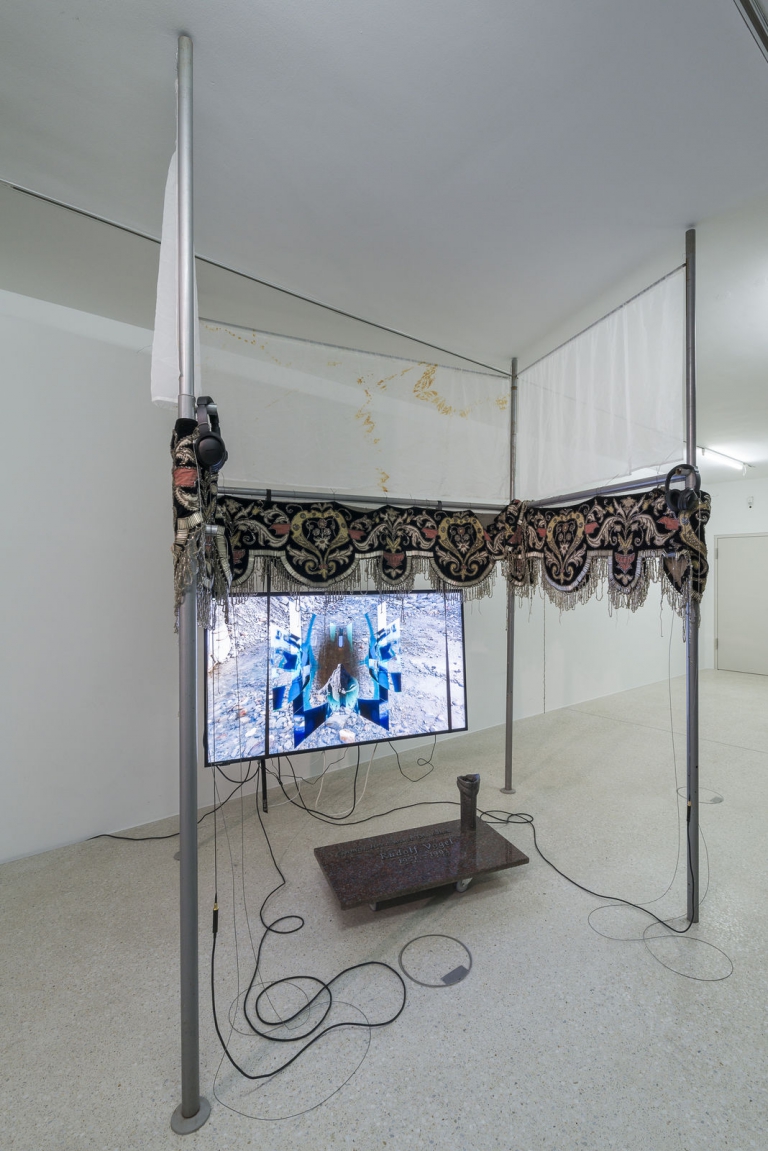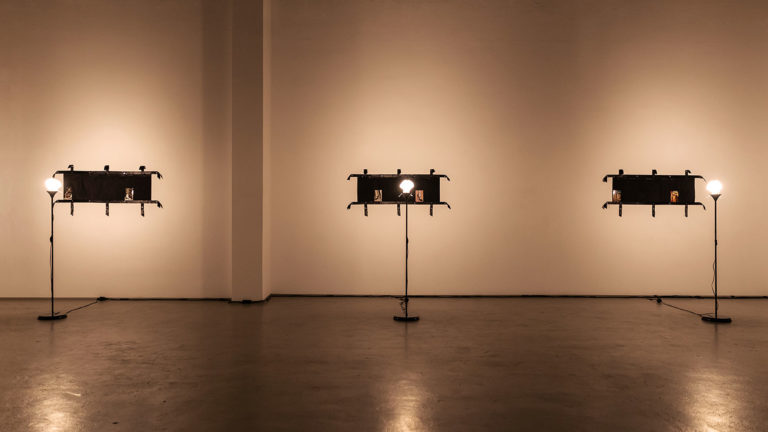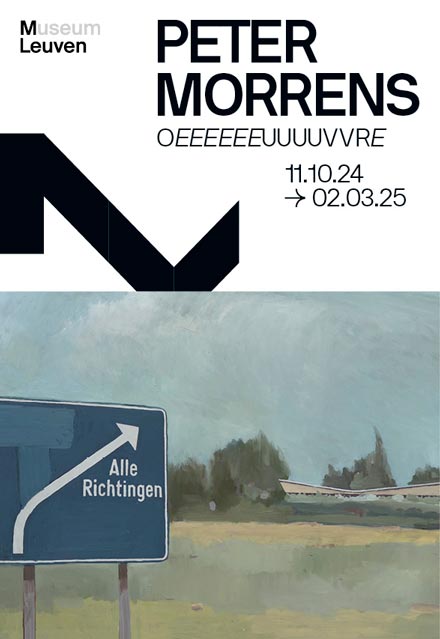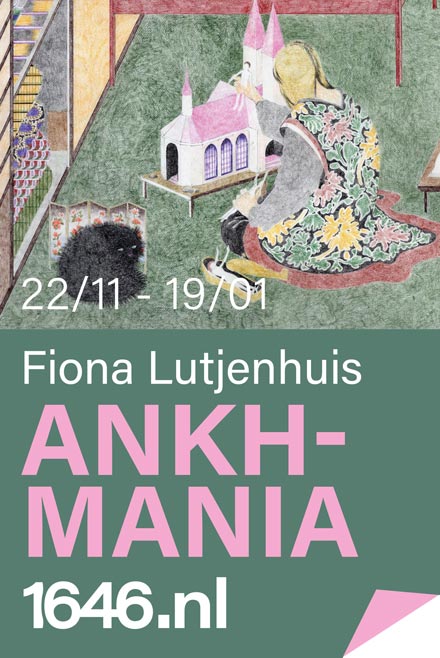Artist: Pati Hill
Exhibition title: Something other than either
Venue: Kunstverein München, Munich, Germany
Date: March 7 – August 16, 2020
Photography: All images copyright and courtesy of the artist and © Kunstverein München
This spring, Kunstverein München presents Pati Hill’s first posthumous institutional solo exhibition in Europe. Hill (b. 1921 in Ashland, Kentucky, USA; d. 2014 in Sens, France) left behind an artistic output spanning roughly 60 years and encompassing various disciplines. Untrained as an artist, she began to use the photocopier as an artistic tool in the early 1970s and continued to do so until her death, leaving behind an extensive oeuvre that explores the relationship between image and text. In addition to this comprehensive body of xerographic work, she published four novels, a memoir, several short stories, artist’s books, and poetry. Drawing also became an essential part of her practice.
The multidimensionality of Hill’s motifs and the stark lighting that seems to emanate from the photocopier’s depths distinguish her work from iconographic examples of Pop Art and offer another historical reading of that era. In addition to the primary works that Hill conceived for exhibitions during her lifetime, the presentation at Kunstverein München also encompasses a large portion of works that have never been shown before.
By using the copier—a machine that was stereotypically linked to secretarial work and thus to feminized labor—to trace everyday objects such as a comb, a carefully folded pair of men’s trousers, or a child’s toy, Hill developed an artistic practice that programmatically translated invisible domestic labor into a visual and public language. Through her use of this reproductive apparatus, she created a model of artistic production that critically opposes the convention of individual expression as well as the supposed neutrality of technologically produced images.
For example, the series Informational Art that Hill began in 1962 took printed diagrams and instructions from product packaging as their subject matter. Whether it was through detailed illustrations that showed housewives how to carve meat or instructions about how to make a doll dance, Hill was interested in arranging quasi-narrative sequences and the subsequent juxtapositions and coincidences of text and image that emerged. In 1975, Hill published the book Slave Days with financial support from the poet James Merrill. The book is comprised of 29 poems thematizing the partly fictionalized everyday lives of housewives, which were then juxtaposed with 31 xerographs. Slave Days was Hill’s first work to combine her xerographs with her own texts, which also described the production site of the works with a sinister humor. In one poem she notes that “Heaven’s door is open to us like a big vacuum cleaner,” thus resignedly outlining the limits of her own spaces of agency. Here, Hill doesn’t use the xerographs as material for a collage or the starting point for further production, but rather presents them alongside her texts as independent works. She thus had a sense of production and reception being equally important parts of her practice. Even though she mostly worked outside of an institutional context and exhibited irregularly, she also wrote about the process of publishing: “I have always thought publishing should be like taking your clothes to the laundromat.”
In her 1981 book Women, Race and Class, American author and civil-rights activist Angela Davis explains how women’s labor has been devalued under advanced capitalism. The separation of domestic labor from immediate profit means that women “can seldom produce tangible evidence of their work.” Hill’s works can certainly be seen in this context. In the series Garments, for example, she documents various pieces of clothing, like corsets or riding pants, whose reproduced images are characterized by high-contrast lighting as well as specific interventions with the copying machine, such as adding excess toner. It almost seems as though the glass platen of the copier is actually helping to fold the clothes, thus testifying to this otherwise invisible form of domestic labor. Hill deployed the copier’s ability to flatten objects to surprisingly dramatic effect, and thus also made the process of image-making the subject of her work. Hill doesn’t try to visualize the invisible as in some of her other works. Instead, she reveals the uncanny aspects of the familiar and questions its everydayness.
Already in the 60s, Hill had conceived of the private sphere as a site of political resistance. Several years before she began working with the copier, she wrote a short novel titled An Angry French Housewife that described a series of transgressions against heteronormative relationship models and was later published together with a number of xerographs under the title Impossible Dreams. At the same time, she worked on the series Dreams Objects Moments. Increasingly frustrated by the lack of access to her copier of choice, the IBM Copier II, she began creating short texts for “[…] an exhibition that conveyed my feelings about copier work without requiring the use of a copier.” By using colored paper—green for Dreams, pink for Objects, and yellow for Moments—Hill created elements of what she described as filters of how we receive and classify information by occasionally confusing the respective categories.
In 1977, Pati Hill met the designer and architect Charles Eames on a transatlantic flight. Through his consulting work for the IT company International Business Machines Corporation (IBM), he finally helped Hill access her long-coveted machine of choice. By 1979 she had used it to create two significant series of works, which differ formally but similarly pursue the destabilization of narration. Hill developed drafts for a universal sign language under the title Proposal for a Universal Language of Symbols. Shortly thereafter she wrote Eames to share her wish for the symbols to be “returned to their original position amongst us…where things were what they seemed.” The second series was Alphabet of Common Objects, one of Hill’s most important works. Arranged in a grid, the 45 images that comprise this work convey the potential that she attributed to visual communication. Moreover, her classification of the objects as alphabetic implies a “linguistic” quality in these images.
The series Men and Women in Sleeping Cars, made in the late 70s, is one of the very few examples that features people in her oeuvre, here sourced from advertising campaigns for the railway industry. Hill never made her own body the subject of her works. She thus stood apart, both formally and thematically, from the dominant tendencies in feminist art production of the 70s and 80s, where the female body was often taken as the starting point in order to extract it from a system of fetishizing and objectifying representations. Through her successful work as a couture model at a young age, Hill was confronted very early on with the dominance of the male gaze, which she negotiated accordingly in her work, only to go beyond this in her later artistic production. In Letters to Jill. A Catalogue and Some Notes on Copying from 1979, she writes: “Many copy artists are women and only copy themselves. I don’t copy myself, but images were made of me for years, and this gave me a sense of reality. The reality of an object perhaps.”
Installation view of Pati Hill, Something other than either at Kunstverein München, 2020; Courtesy Kunstverein München; Pati Hill Collection, Arcadia University; Photo: Sebastian Kissel
Pati Hill, from the series Informational Art (1962-79), installation view of Pati Hill, Something other than either at Kunstverein München, 2020; Courtesy Kunstverein München e.V.; Pati Hill Collection, Arcadia University; Photo: Sebastian Kissel
Pati Hill, from the series Informational Art (1962-79), installation view of Pati Hill, Something other than either at Kunstverein München, 2020; Courtesy Kunstverein München e.V.; Pati Hill Collection, Arcadia University; Photo: Sebastian Kissel
Installation view of Pati Hill, Something other than either at Kunstverein München, 2020; Courtesy Kunstverein München; Pati Hill Collection, Arcadia University; Photo: Sebastian Kissel
Pati Hill, from the series Photocopied Garments (1976), Installation view of Pati Hill, Something other than either at Kunstverein München, 2020; Courtesy Kunstverein München; Pati Hill Collection, Arcadia University; Photo: Sebastian Kissel
Installation view of Pati Hill, Something other than either at Kunstverein München, 2020; Courtesy Kunstverein München; Pati Hill Collection, Arcadia University; Photo: Sebastian Kissel
Installation view of Pati Hill, Something other than either at Kunstverein München, 2020; Courtesy Kunstverein München; Pati Hill Collection, Arcadia University; Photo: Sebastian Kissel
Installation view of Pati Hill, Something other than either at Kunstverein München, 2020; Courtesy Kunstverein München; Pati Hill Collection, Arcadia University; Photo: Sebastian Kissel
Installation view of Pati Hill, Something other than either at Kunstverein München, 2020; Courtesy Kunstverein München; Pati Hill Collection, Arcadia University; Photo: Sebastian Kissel
Installation view of Pati Hill, Something other than either at Kunstverein München, 2020; Courtesy Kunstverein München; Pati Hill Collection, Arcadia University; Photo: Sebastian Kissel
Installation view of Pati Hill, Something other than either at Kunstverein München, 2020; Courtesy Kunstverein München; Pati Hill Collection, Arcadia University; Photo: Sebastian Kissel
Pati Hill, from the series Photocopying Versailles (1980-83), installation view of Pati Hill, Something other than either at Kunstverein München, 2020; Courtesy Kunstverein München; Pati Hill Collection, Arcadia University; Photo: Sebastian Kissel
Installation view of Pati Hill, Something other than either at Kunstverein München, 2020; Courtesy Kunstverein München; Pati Hill Collection, Arcadia University; Photo: Sebastian Kissel
Installation view of Pati Hill, Something other than either at Kunstverein München, 2020; Courtesy Kunstverein München; Pati Hill Collection, Arcadia University; Photo: Sebastian Kissel
Installation view of Pati Hill, Something other than either at Kunstverein München, 2020; Courtesy Kunstverein München; Pati Hill Collection, Arcadia University; Photo: Sebastian Kissel
Installation view of Pati Hill, Something other than either at Kunstverein München, 2020; Courtesy Kunstverein München; Pati Hill Collection, Arcadia University; Photo: Sebastian Kissel
Pati Hill, from the series Dreams Objects Moments, installation view of Pati Hill, Something other than either at Kunstverein München, 2020; Courtesy Kunstverein München; Pati Hill Collection, Arcadia University; Photo: Sebastian Kissel
Pati Hill, from the series Dreams Objects Moments, installation view of Pati Hill, Something other than either at Kunstverein München, 2020; Courtesy Kunstverein München; Pati Hill Collection, Arcadia University; Photo: Sebastian Kissel
Pati Hill, from the series Dreams Objects Moments, installation view of Pati Hill, Something other than either at Kunstverein München, 2020; Courtesy Kunstverein München; Pati Hill Collection, Arcadia University; Photo: Sebastian Kissel
Pati Hill, from the series Mirrors, installation view of Pati Hill, Something other than either at Kunstverein München, 2020; Courtesy Kunstverein München; Pati Hill Collection, Arcadia University; Photo: Sebastian Kissel
Pati Hill, from the series Body Parts, installation view of Pati Hill, Something other than either at Kunstverein München, 2020; Courtesy Kunstverein München; Pati Hill Collection, Arcadia University; Photo: Sebastian Kissel
Pati Hill, from the series Body Parts, installation view of Pati Hill, Something other than either at Kunstverein München, 2020; Courtesy Kunstverein München; Pati Hill Collection, Arcadia University; Photo: Sebastian Kissel
Pati Hill, from the series Alphabet of Common Objects (1977-79), installation view of Pati Hill, Something other than either at Kunstverein München, 2020; Courtesy Kunstverein München; Pati Hill Collection, Arcadia University; Photo: Sebastian Kissel
Pati Hill, from the series Alphabet of Common Objects (1977-79), installation view of Pati Hill, Something other than either at Kunstverein München, 2020; Courtesy Kunstverein München; Pati Hill Collection, Arcadia University; Photo: Sebastian Kissel
Installation view of Pati Hill, Something other than either at Kunstverein München, 2020; Courtesy Kunstverein München; Pati Hill Collection, Arcadia University; Photo: Sebastian Kissel
Installation view of Pati Hill, Something other than either at Kunstverein München, 2020; Courtesy Kunstverein München; Pati Hill Collection, Arcadia University; Photo: Sebastian Kissel
Installation view of Pati Hill, Something other than either at Kunstverein München, 2020; Courtesy Kunstverein München; Pati Hill Collection, Arcadia University; Photo: Sebastian Kissel
Installation view of Pati Hill, Something other than either at Kunstverein München, 2020; Courtesy Kunstverein München; Pati Hill Collection, Arcadia University; Photo: Sebastian Kissel
Installation view of Pati Hill, Something other than either at Kunstverein München, 2020; Courtesy Kunstverein München; Pati Hill Collection, Arcadia University; Photo: Sebastian Kissel
Installation view of Pati Hill, Something other than either at Kunstverein München, 2020; Courtesy Kunstverein München; Pati Hill Collection, Arcadia University; Photo: Sebastian Kissel
Installation view of Pati Hill, Something other than either at Kunstverein München, 2020; Courtesy Kunstverein München; Pati Hill Collection, Arcadia University; Photo: Sebastian Kissel
Pati Hill, A Golden Girl (1974), black-and-white xerograph on colored paper, 34,9 x 30,5 cm, installation view of Pati Hill, Something other than either at Kunstverein München, 2020; Courtesy Kunstverein München e.V.; Pati Hill Collection, Arcadia University; Photo: Sebastian Kissel
Installation view of Pati Hill, Something other than either at Kunstverein München, 2020; Courtesy Kunstverein München; Pati Hill Collection, Arcadia University; Photo: Sebastian Kissel
Pati Hill, from the series Men and Women in Sleeping Cars (1979), installation view of Pati Hill, Something other than either at Kunstverein München, 2020; Courtesy Kunstverein München; Pati Hill Collection, Arcadia University; Photo: Sebastian Kissel
Pati Hill, from the series Men and Women in Sleeping Cars (1979), installation view of Pati Hill, Something other than either at Kunstverein München, 2020; Courtesy Kunstverein München; Pati Hill Collection, Arcadia University; Photo: Sebastian Kissel
Pati Hill, from the series Scarves (1983), installation view of Pati Hill, Something other than either at Kunstverein München, 2020; Courtesy Kunstverein München; Pati Hill Collection, Arcadia University; Photo: Sebastian Kissel
Pati Hill, from the series Men and Women in Sleeping Cars (1979), installation view of Pati Hill, Something other than either at Kunstverein München, 2020; Courtesy Kunstverein München; Pati Hill Collection, Arcadia University; Photo: Sebastian Kissel










